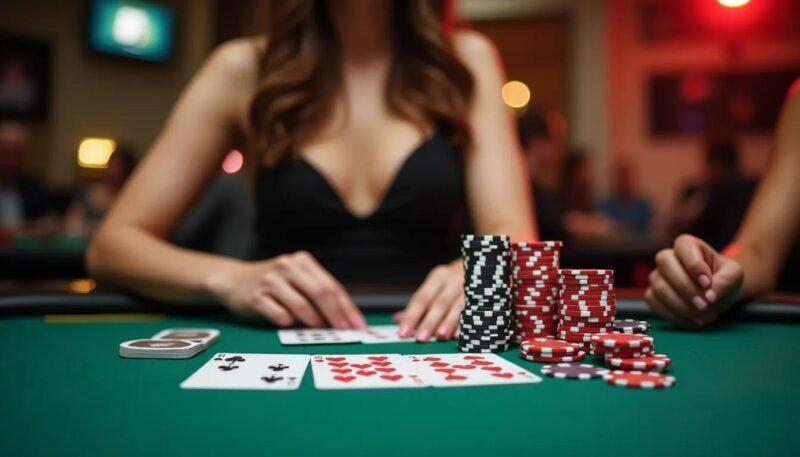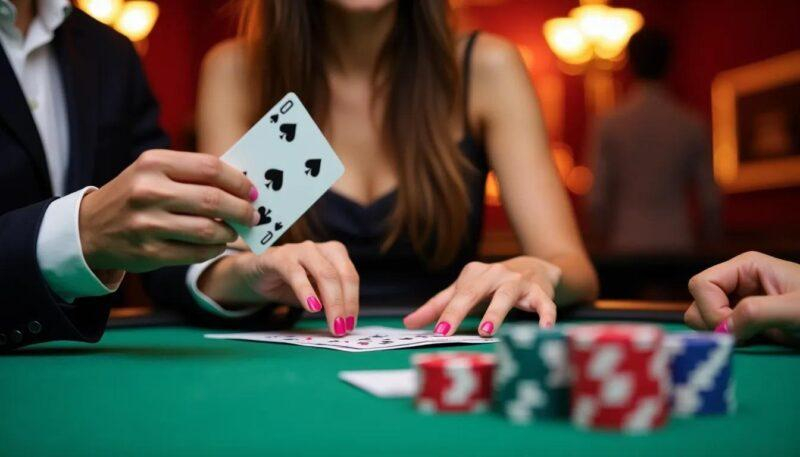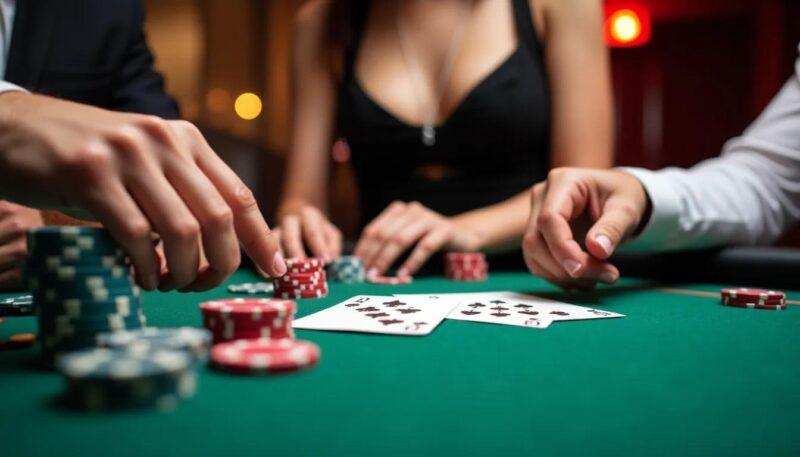Poker, the thrilling game of skill, strategy, and nerves of steel. Among the various tactics and techniques used by players to outwit their opponents, bluffing stands out as an art form in itself. Deciphering the subtle cues and signals of a bluff can mean the difference between victory and defeat at the poker table. In this article, we will delve into the intricate world of poker bluffing, exploring the psychology behind this deceptive practice and decoding the secrets to mastering this essential skill of the game. Join us as we uncover the strategies and techniques that separate the novice bluffer from the master of deception in the high-stakes world of poker.
The Psychology Behind Poker Bluffing
Bluffing in poker is an art form that requires both skill and psychological cunning. It’s not just about having a good poker face; it’s about understanding the psychology behind your opponents’ actions and using that to your advantage. When you bluff in poker, you are essentially manipulating the thoughts and emotions of the other players at the table.
One key aspect of bluffing in poker is understanding the concept of “tells.” Tells are subtle cues that players give off, often unknowingly, that can give insight into the strength of their hand. By paying close attention to your opponents’ behavior, body language, and betting patterns, you can pick up on these tells and use them to make an informed decision about whether to bluff or not.
Successful bluffing in poker also requires a strong understanding of risk-taking and calculated decision-making. You need to be able to assess the potential outcomes of your bluff, weigh the risks and rewards, and make a strategic move that will either win you the pot or minimize your losses. Bluffing is all about playing the mental game and outsmarting your opponents at the table.
Recognizing Telltale Signs of Bluffing in Your Opponents
Poker bluffing is an art form that can make or break a player’s game. Learning to recognize the telltale signs of bluffing in your opponents can give you a significant advantage at the table. By paying attention to their body language, betting patterns, and overall demeanor, you can start to decode their bluffs and make more informed decisions.
One common tell of bluffing is when a player suddenly becomes overly talkative or chatty. They may try to distract you with small talk or jokes in an attempt to cover up their nerves. Additionally, watch out for players who make excessive eye contact or avoid eye contact altogether. These behaviors can be giveaways that they are trying to deceive you.
Another key indicator of bluffing is a sudden change in betting behavior. If a player who has been conservative with their bets suddenly goes all-in, they may be trying to intimidate you into folding. Conversely, if a player who has been aggressive suddenly checks, they may be trying to lull you into a false sense of security. By staying alert and observant, you can start to crack the code of poker bluffing and improve your odds of winning.
Mastering the Art of Bluffing Through Strategic Gameplay
Bluffing in poker is an art form that requires strategic gameplay and a keen understanding of human psychology. Mastering the art of bluffing can elevate your poker game to the next level and help you outwit your opponents at the table.
One key aspect of bluffing is knowing when to bluff and when to fold. It’s essential to choose your bluffing opportunities wisely and to be able to read your opponents’ reactions and betting patterns. By studying your opponents and paying attention to their tendencies, you can better gauge when it’s the right time to bluff.
Successful bluffing also involves maintaining a strong poker face and conveying false information through your body language and expressions. By remaining unreadable and unpredictable, you can increase the effectiveness of your bluffs and keep your opponents guessing. Remember, mastering the art of bluffing takes time and practice, but with dedication and skill, you can become a formidable bluffing expert at the poker table.
Effective Ways to Improve Your Bluffing Skills
Improving your bluffing skills in poker can take your game to the next level and help you win big. Here are some effective ways to enhance your bluffing techniques:
- Study Your Opponents: Observing your opponents’ behaviors and tendencies can give you valuable insights into when they are bluffing. Look for patterns in their betting, body language, and facial expressions to help you make informed decisions.
- Mix Up Your Play: Avoid falling into predictable patterns by mixing up your betting strategies. Confuse your opponents by occasionally bluffing with strong hands and vice versa. Keep your opponents guessing to increase your chances of successfully pulling off a bluff.
- Stay Calm and Confident: One of the key elements of successful bluffing is maintaining a calm and confident demeanor. Avoid giving away any signs of nervousness or uncertainty, as this can tip off your opponents. Projecting confidence can help you sell your bluff effectively.
Understanding the Risks and Rewards of Bluffing in Poker
Bluffing in poker is a strategic move that can either lead to a big win or a devastating loss. It involves making your opponents believe that you have a stronger hand than you actually do, in order to make them fold and secure the pot. However, the risks and rewards of bluffing should be carefully weighed before deciding to execute this tactic.
One of the main risks of bluffing in poker is that it can backfire if your opponents see through your deception. If they call your bluff, you could end up losing a significant amount of chips and put yourself in a vulnerable position for future hands. On the other hand, successfully bluffing your way to victory can be incredibly rewarding, boosting your confidence and establishing your reputation at the table.
To increase your chances of bluffing successfully in poker, it’s important to consider the following factors: your table image, your opponents’ playing styles, and the betting patterns in the current hand. By studying these aspects, you can better assess whether bluffing is a viable option and make more informed decisions during gameplay. Remember, bluffing is an art that requires practice and a keen understanding of human psychology – master it, and you could become a formidable force at the poker table.
Q&A
Q: What is poker bluffing?
A: Bluffing in poker is when a player makes a bet or raise with a weak hand in order to deceive their opponents into thinking they have a stronger hand.
Q: How important is bluffing in a game of poker?
A: Bluffing is a crucial aspect of poker strategy as it allows players to win pots even when they don’t have the best hand.
Q: What are some common bluffing techniques?
A: Some common bluffing techniques include semi-bluffing, where a player bets with a drawing hand, and representing a strong hand by making aggressive bets and raises.
Q: How can one spot a bluff in poker?
A: Spotting a bluff in poker requires paying attention to an opponent’s betting patterns, body language, and overall behavior at the table.
Q: Is bluffing ethical in poker?
A: Bluffing is a legitimate and ethical strategy in poker as long as it is done within the rules of the game and in a respectful manner towards opponents.
The Conclusion
As we’ve delved into the intricate world of poker bluffing, it’s clear that mastering this skill requires a combination of strategy, observation, and intuition. Whether you’re a seasoned player or a novice looking to improve your game, understanding the art of bluffing is essential in becoming a formidable opponent at the table. So next time you sit down for a game of poker, remember these tips and tricks to outwit your opponents and come out on top. Happy bluffing!








